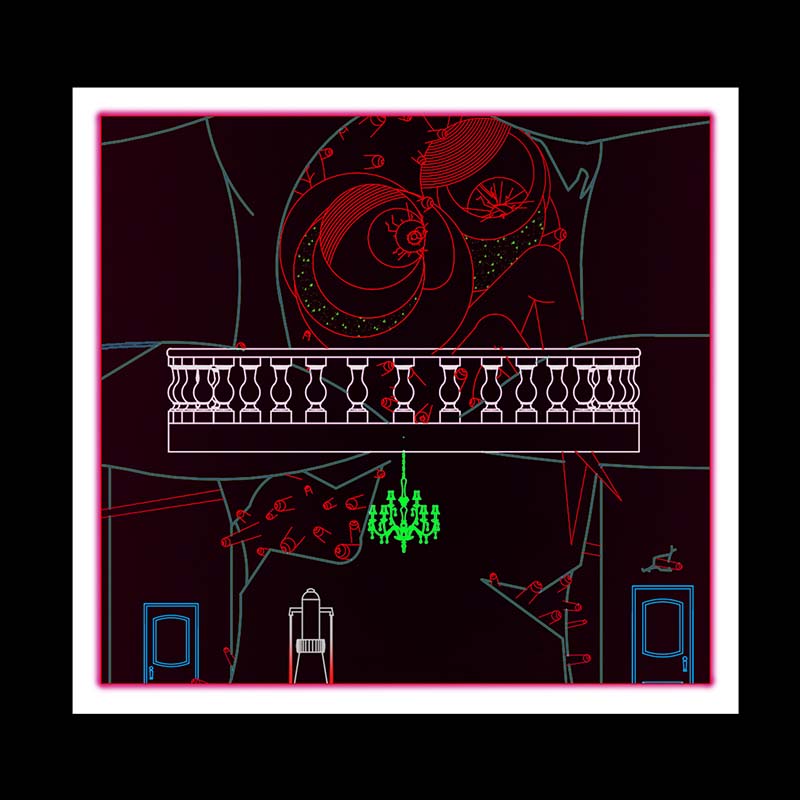

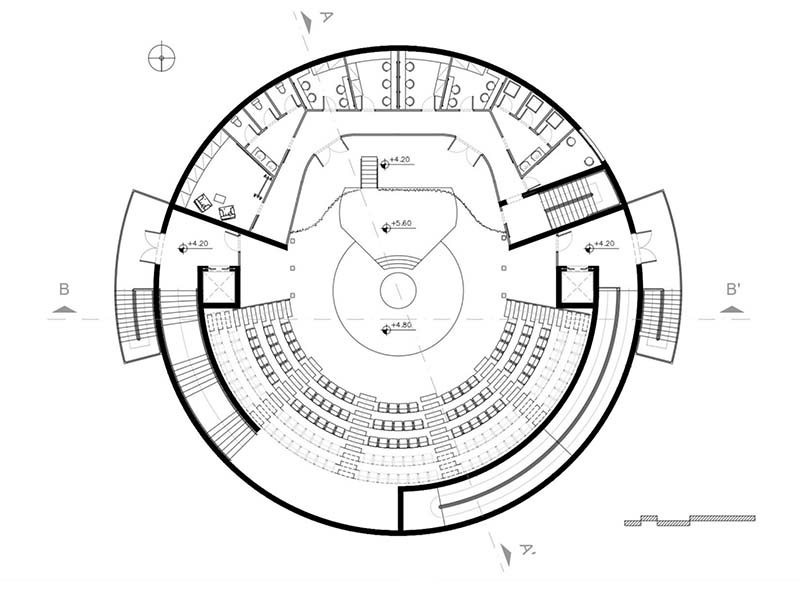

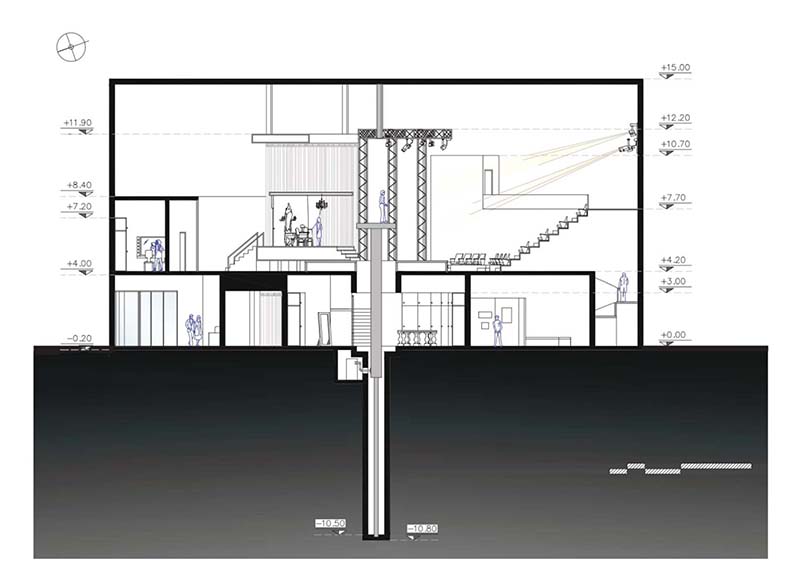







This thesis is the result of an attempt to present a proposal of a theatrical performance of the play “The Balcony” of Jean Genet (1956) from a scenographic and architectural point of view. The specific play consists of nine completely different and barely connected scenes of indoor and outdoor spaces. This challenge for the smooth combination of the individual parts is also the reason why this play was originally chosen. In addition, the very theatrical space in which the performance takes place- a refinery that is transformed into the place where the theatrical scene is established- is in itself an alternative proposal, just as the play itself was in its time a strong challenge for the theatrical conditions. Quite in the centre of the play, a circular floor lifting-lowering mechanism, inspired by the text, necessary for the proposed scenographic performance is a key part of the architectural structure of the theatrical space in which the play is proposed to be performed.
The thesis lists introductory information about the “Theatre of the Absurd”, the special category in which the play belongs, information about the author, the work, the two central ideas of the proposal that is presented. These ideas concern playing with the height differences of the ground on a theatre stage, but also placing a type of building similar to the Panopticon on a theatre stage. Then it is proposed to create a new building as a place to host the performance. Finally, the main topic of the thesis is presented, which is the scenography of the nine scenes of the play. Mainly guided by a kitsch aesthetic, a version of the play is proposed in which special importance and attention has been paid to the objects used in the scenes and their alternation, to the textures and the lighting of each individual scene of the play.
Supervisor: Papadimitriou Maria
Reference Number: 1006
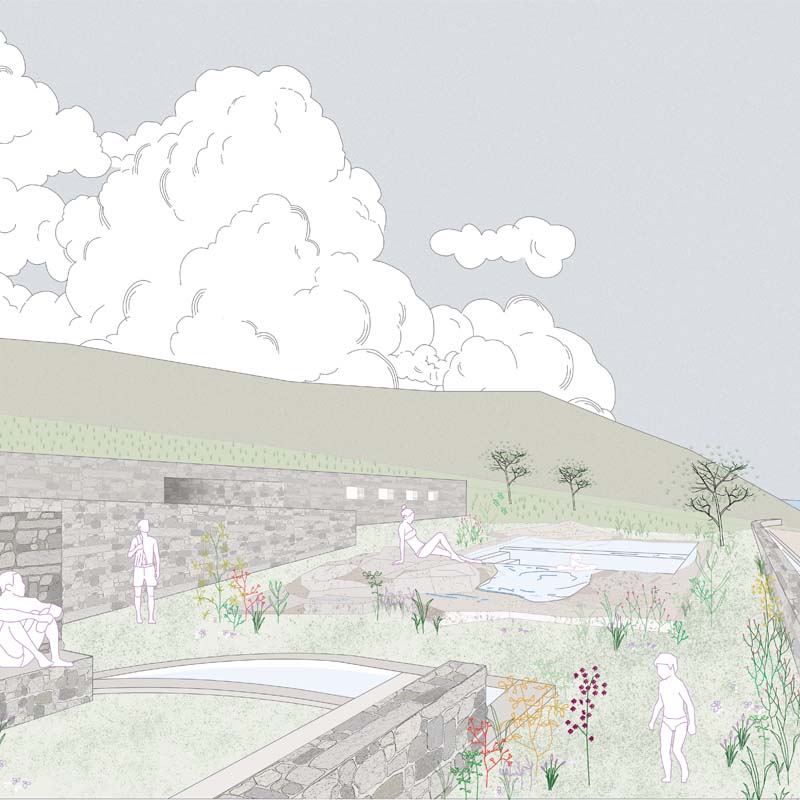

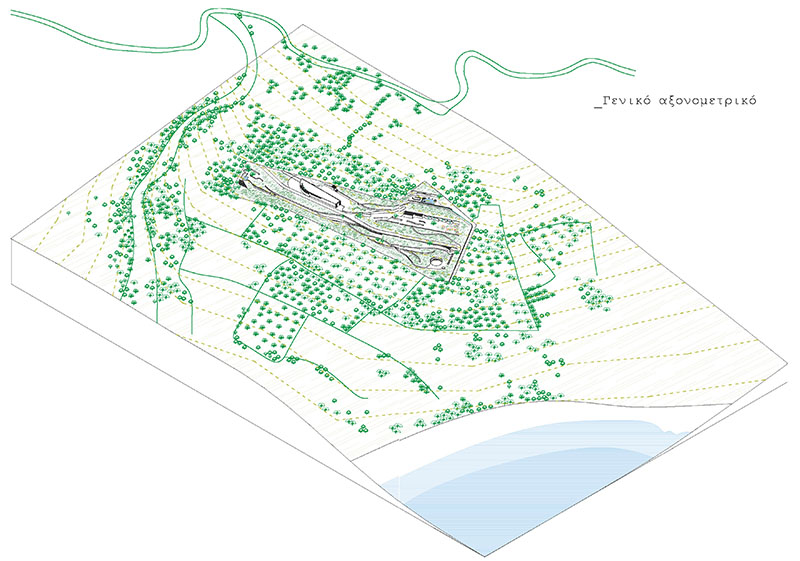

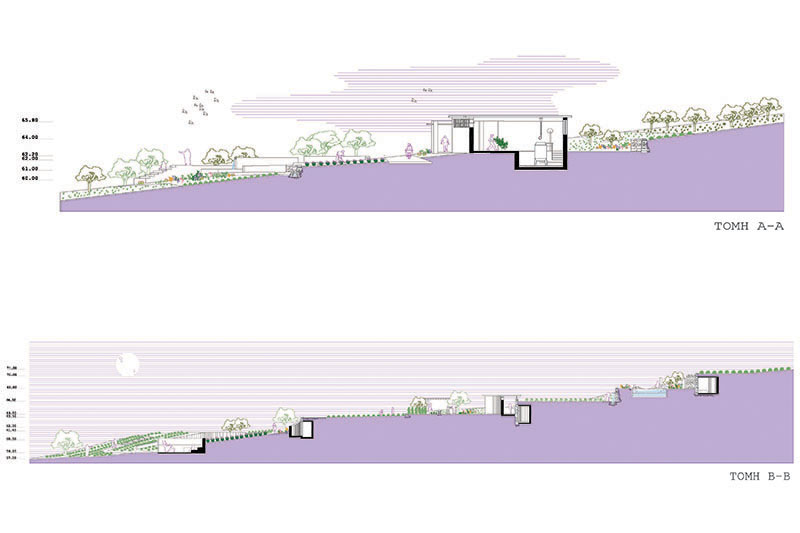

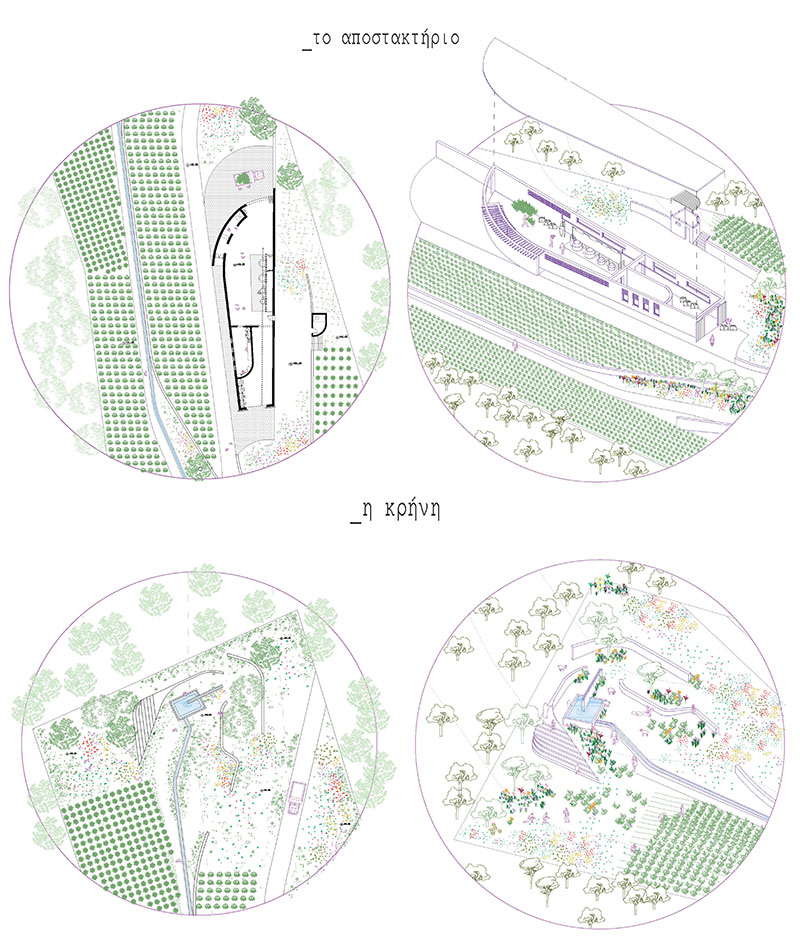

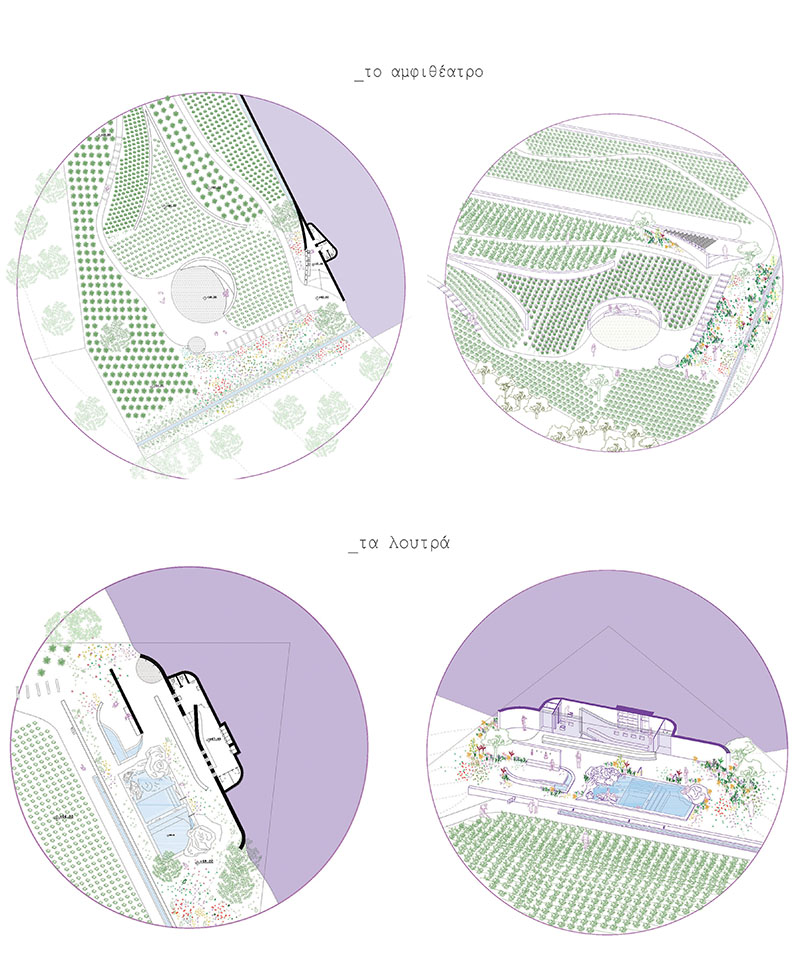

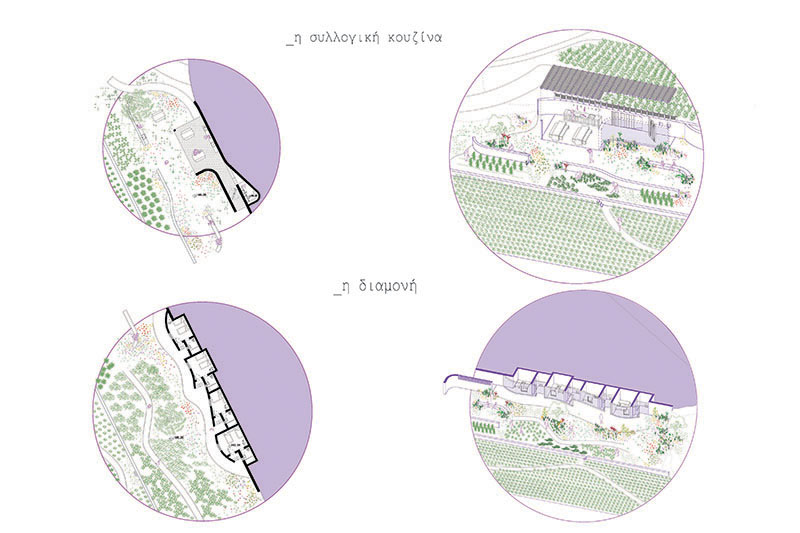

This project thesis constitutes an investigation that attempts to synthesize an olfactory landscape and the relationship of the human factor with it. It is the idea of a community that encompasses the concepts of coexistence, nature, evolution and creation. Man's relationship with space and reason becomes evident through architectural elements, as well as the history of the place. Focusing on the island of Samothraki, the process of distilling essential oils from plants that thrive on the island is explored. This project attempts to be an interpretation of a route and the way it is related to the Kaverian Mysteries, which were celebrated/held on the island, creating an experience open to the public, with coexistence and sensation as the main axes. Prompted by the sensory experiences that come through these specific Mysteries, an attempt is made to translate this quality into today’s context. Focusing on tracing the space, and how it becomes the canvas for the collaboration of the "new" mysteries. Formulating a landscape where a distillery is located, acting as an alternative form of agritourism, with spaces that frame the distillation process and, at the same time, bring people together but, also, familiarizing one with their own self.
Key words/concepts: Samothrace, essential oils, Kaverian mysteries, smell, distillery
Supervisor: Gavrilou Evelyn
Reference Number: 1021
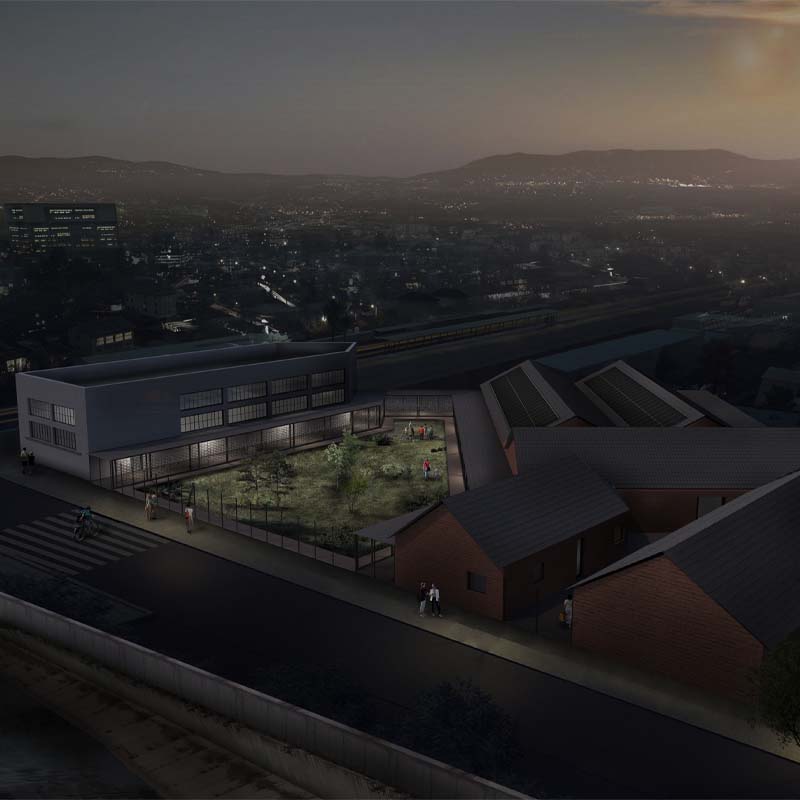

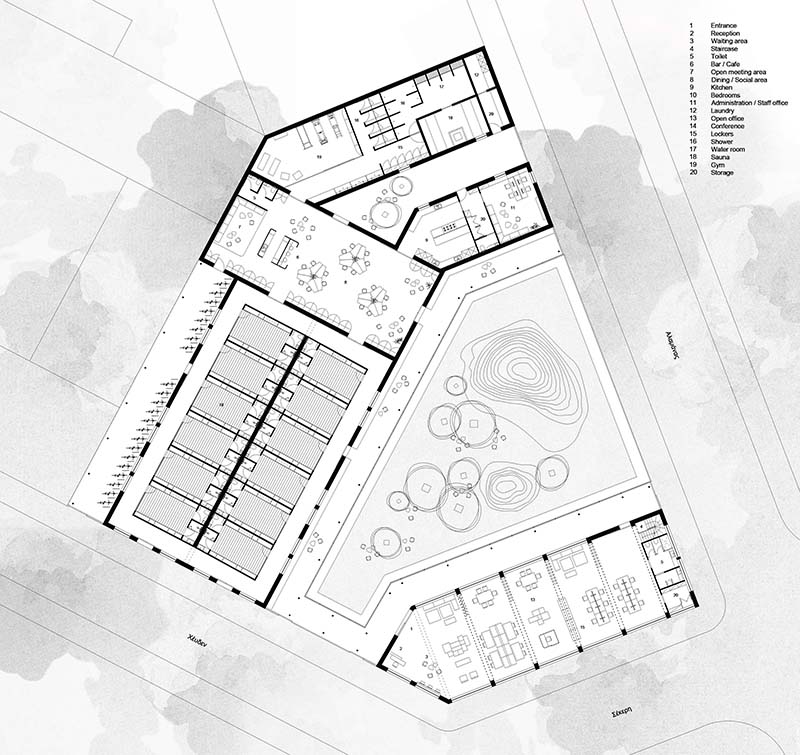

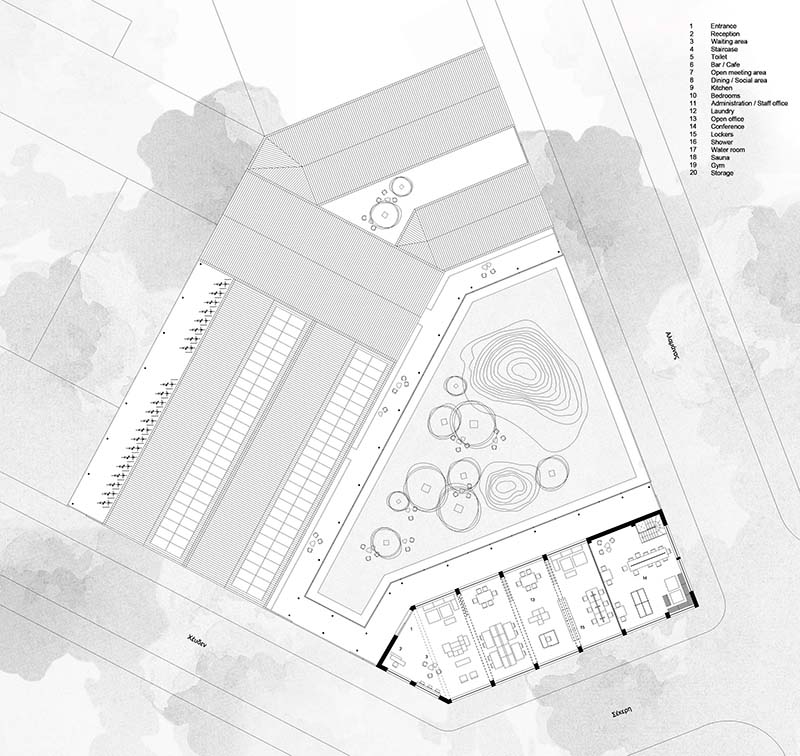

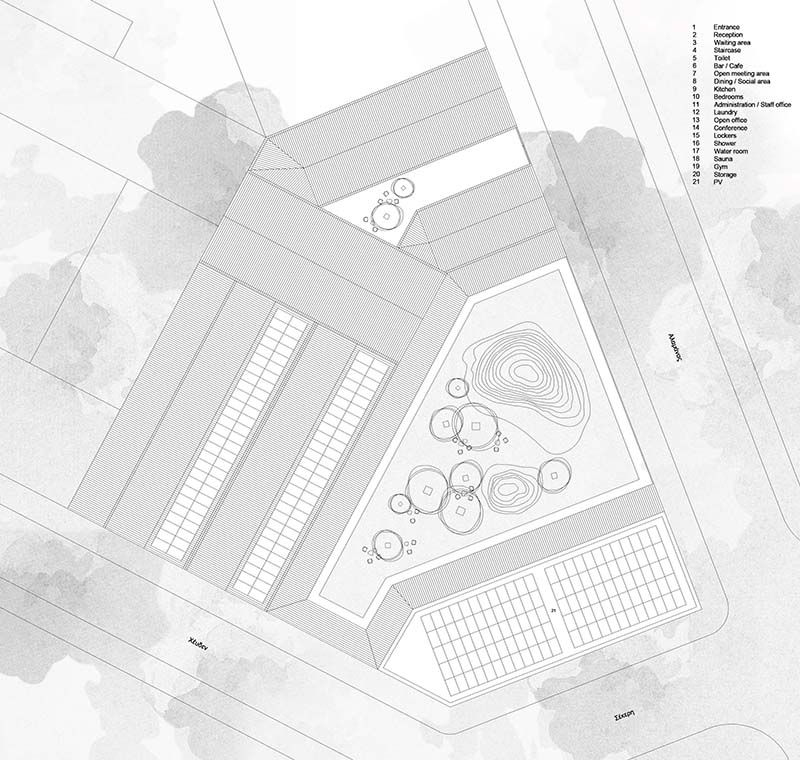

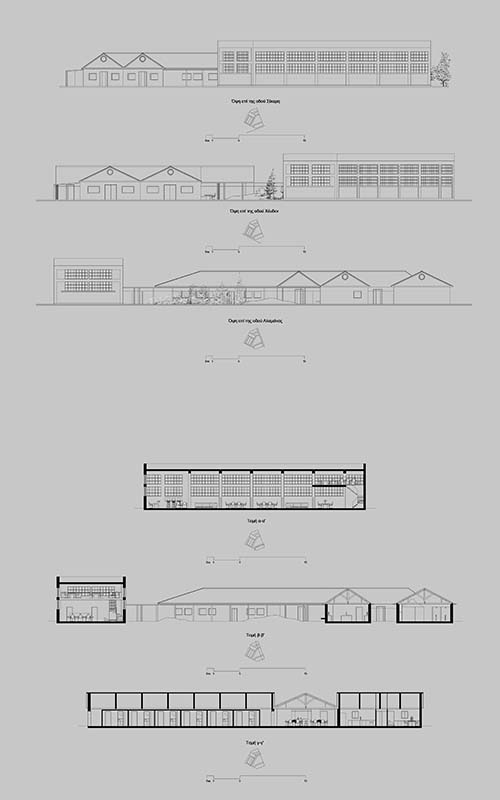

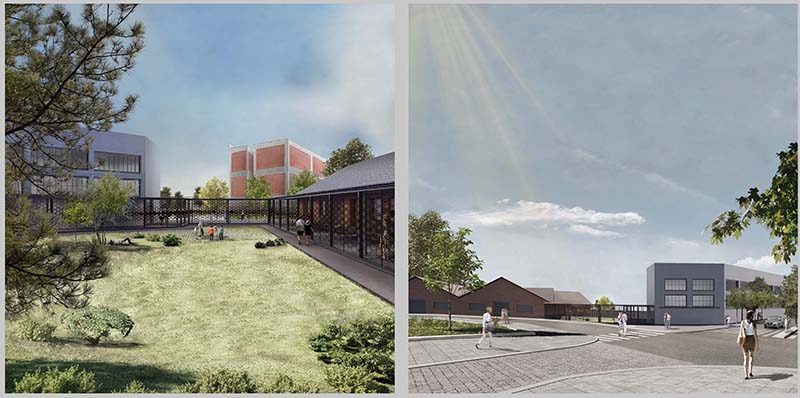

The aim of this study is to investigate how an abandoned complex of industrial-industrial activities inside the city of Volos can be transformed/transformed into a field-core of new active social intersection of functions-services. The important new proposal is based on the observation that the design of rental accommodation for a certain period of time does not allow the personalization (freedom of handling-behaviour) of the space. My intention is to create hybrid flexible-flexible spaces where the interaction between visitors-temporary residents, and resident-workers in spaces designed for work will be encouraged. Provided the preservation-rehabilitation of the existing clusters of buildings, their reuse and their essential composition with the existing free areas-empties of the plot were studied. My study and the designed proposal are decisive in upgrading the city's identity. It focuses on the reuse and activation of the inactive industrial space-plot and its integration into the urban fabric, as it will now contain new uses, compatible and necessary for the city. Issues of space-relationships such as connectivity, sustainability, energy-food autonomy that can be developed in it and many other remnants of industrial history. Forming the core of the proposal, as the transition from political inactivity to research-design action is sought. The center as a space of integrated design is proposed to be integrated into the new approaches of the local-hyperlocal paradigm of collective relations by rekindling life in the previously abandoned industrial complex.
Supervisor: Remy Nicolas
Reference Number: 993
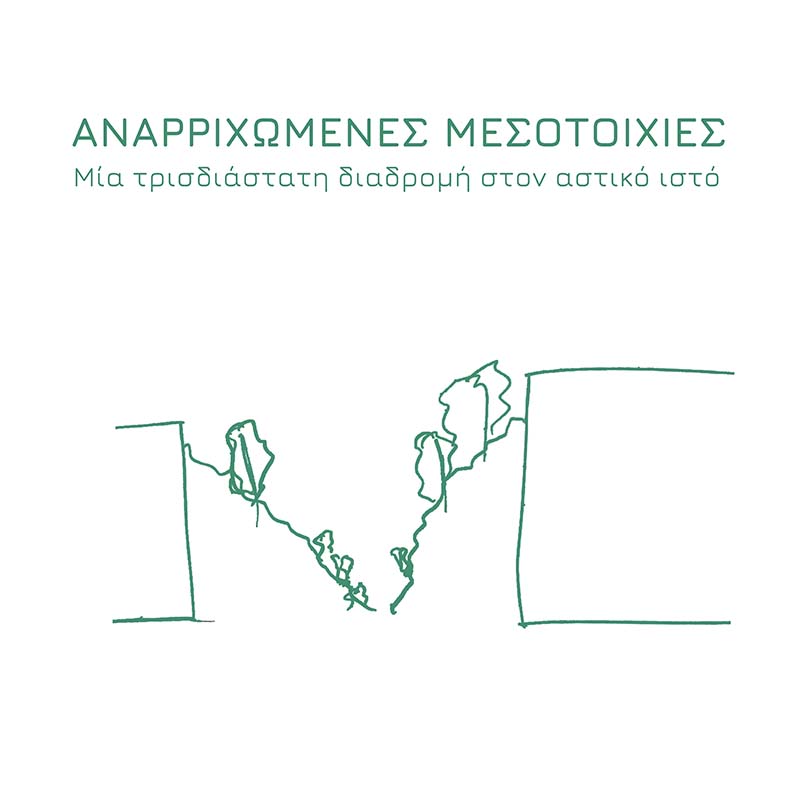

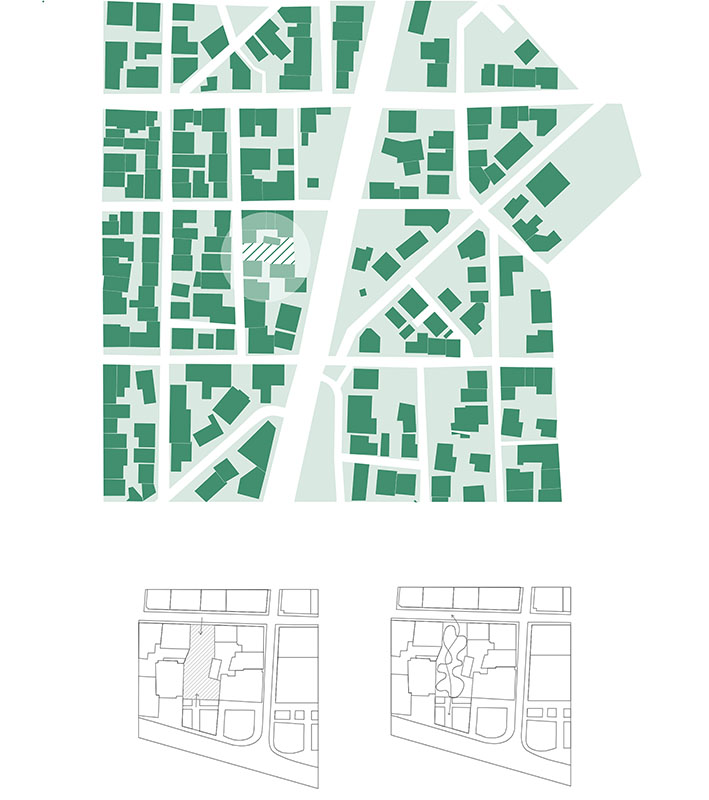

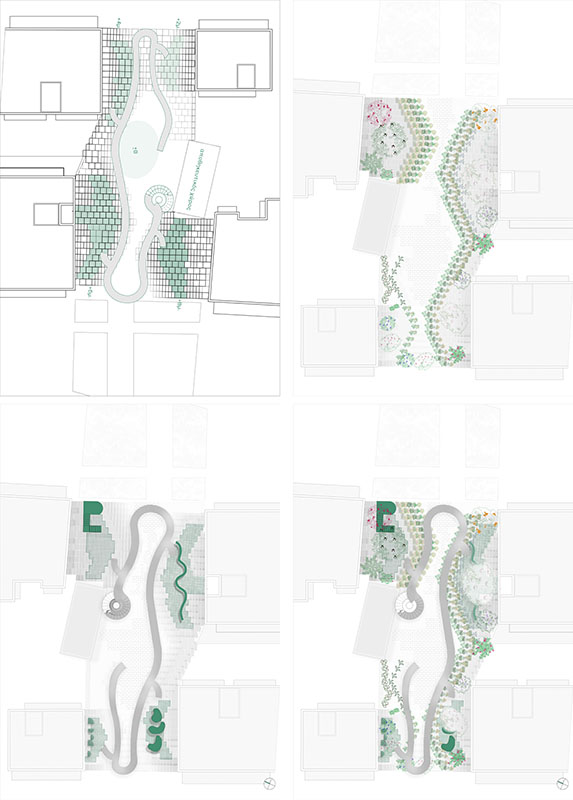

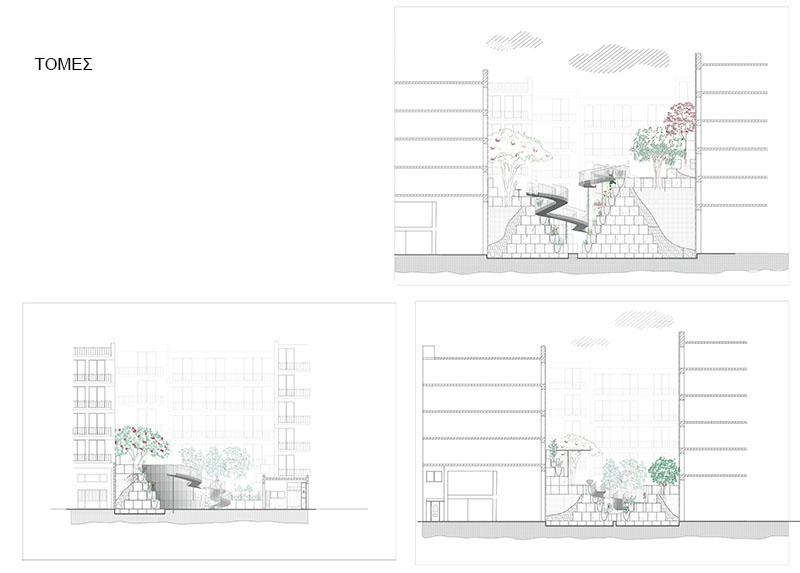

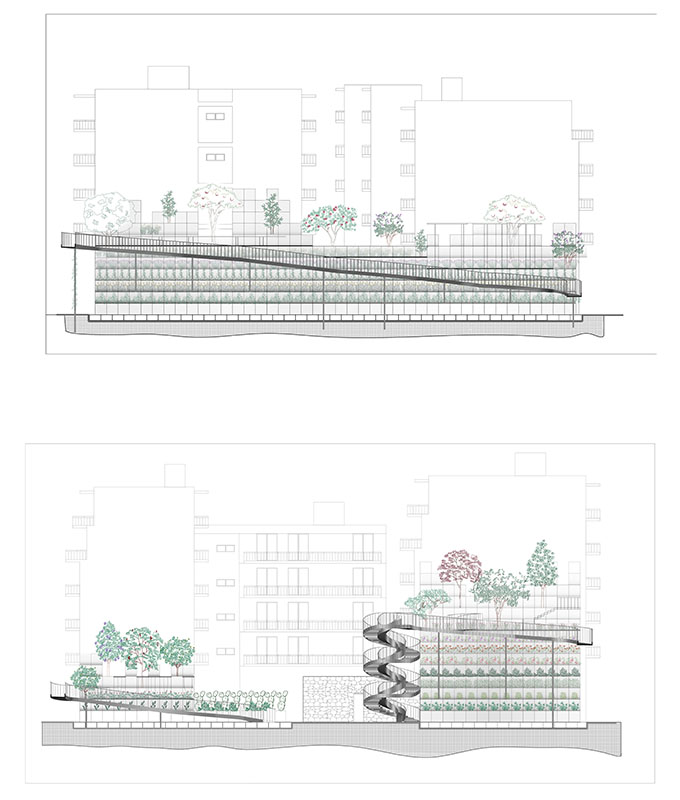

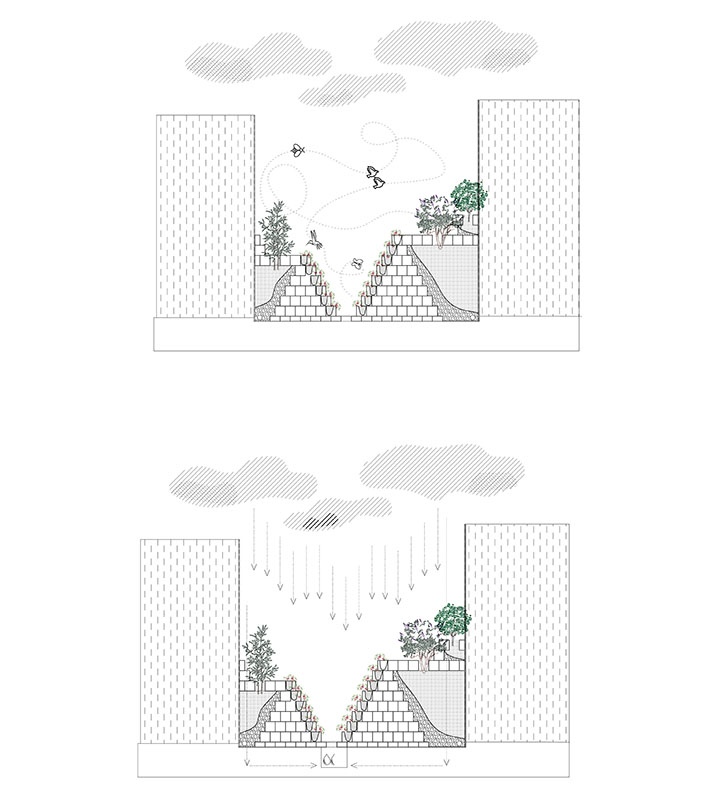

This thesis project emerged as a continuation of my personal concerns, throughout my studies, regarding the interaction of green spaces and the city around them. Burning issues concerning climate change, the introversion towards our private spaces as a remnant of a pandemic period, the isolation and lack of cooperation within a neighborhood were some of the reasons that strengthened the desire to intervene in the partition walls of the apartment buildings of a dense urban fabric and their transformation into climbing green spaces.
The aim of such a movement, apart from the character it has towards issues of dealing with the heat island and enhancing biodiversity, is to create a new experience in the urban fabric capable of strengthening the concept of the neighborhood and with the three-dimensional wandering that characterizes it to be able to travel its visitors.
Supervisor: Mitroulias Giorgos
Reference Number: 1036
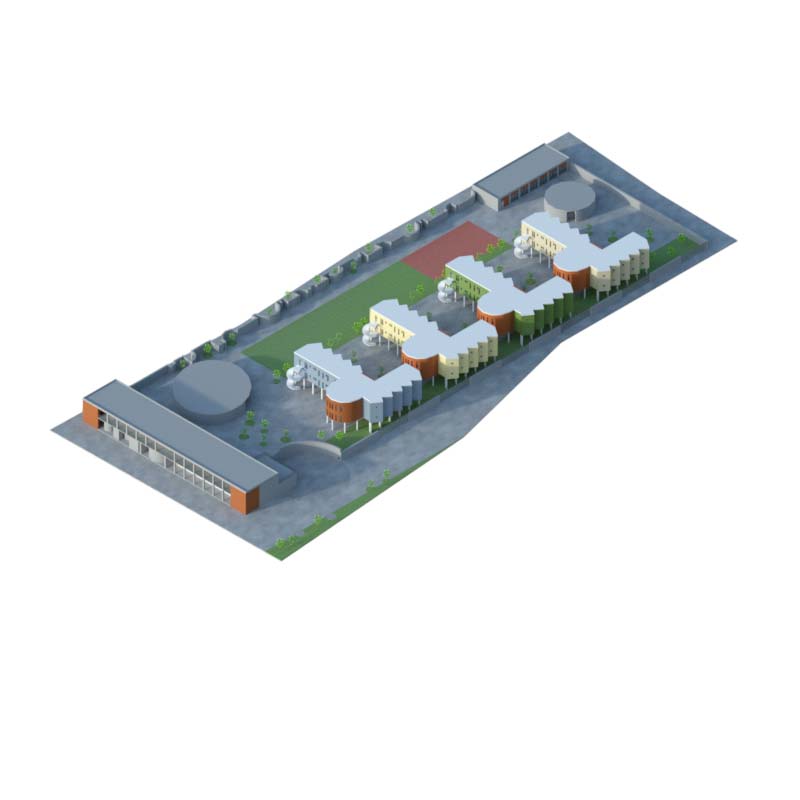

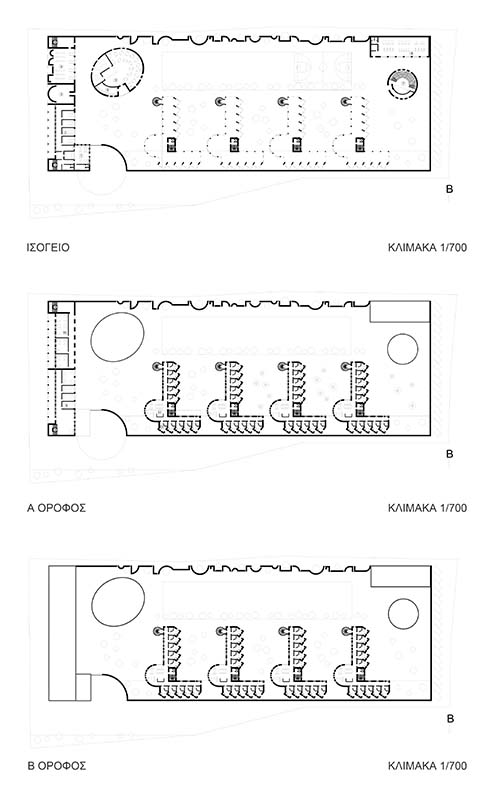

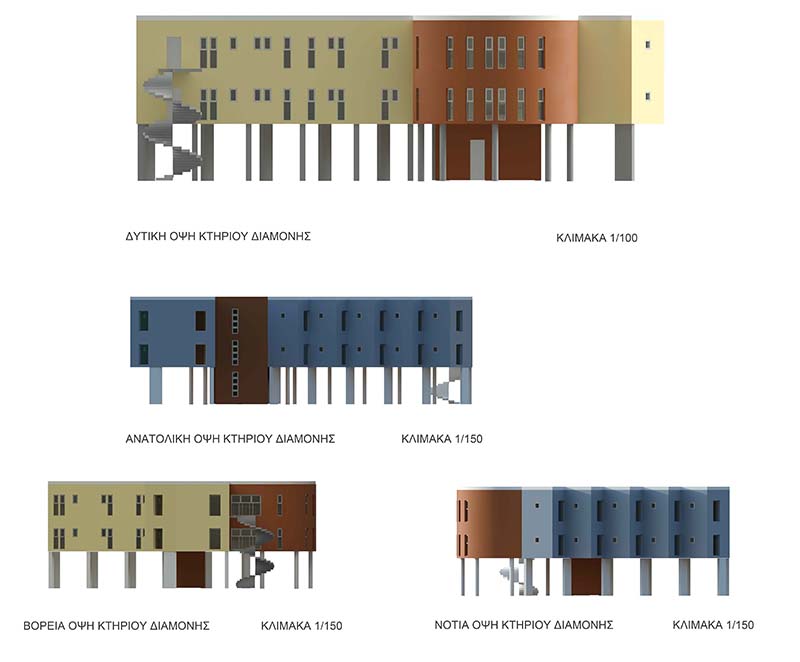

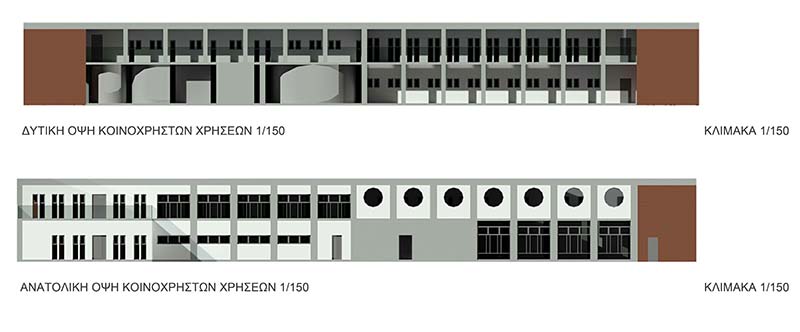

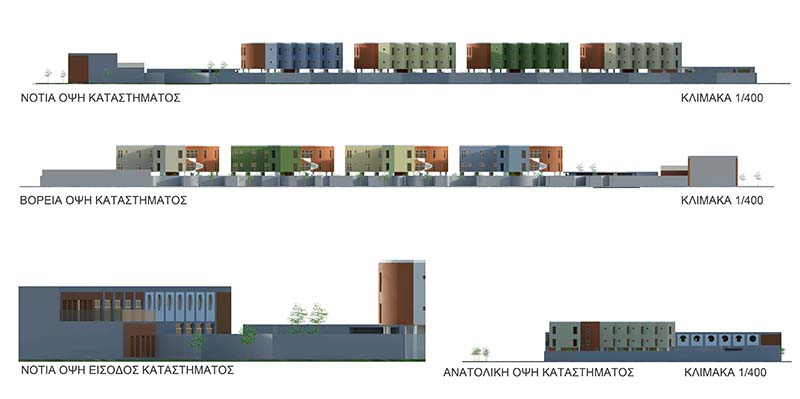



In this thesis entitled ''Open juvenile detention centre of Volos'' the design of an ''open'' type juvenile prison is presented. The existing juvenile detention centre is ''closed'' and is located in the city of Volos, in the Chiliadousarea.
The architecture of the “open” prison is characterised by reduced security levels, freely developing building organisation, privacy gradation and movement reinforcement. The structure is composed of accommodation, staff and common function buildings. Programmatic functions include the dining hall, Amphitheatre, gymnasium, library, classrooms and chapel.
The new correctional typology is being implemented in Northern European countries and in America and is proving to be effective in bringing about successful correction, with smooth and largely permanent reintegration of individuals into society.
As far as the detainees are concerned, they are juveniles, of the same sex and with varying degrees of delinquency.
Through this proposal, an attempt is made to incorporate a modern prison typology in our country, aiming to optimize the correction of juveniles and their reintegration into society.
Supervisor: Manolidis Kostas
Reference Number: 991
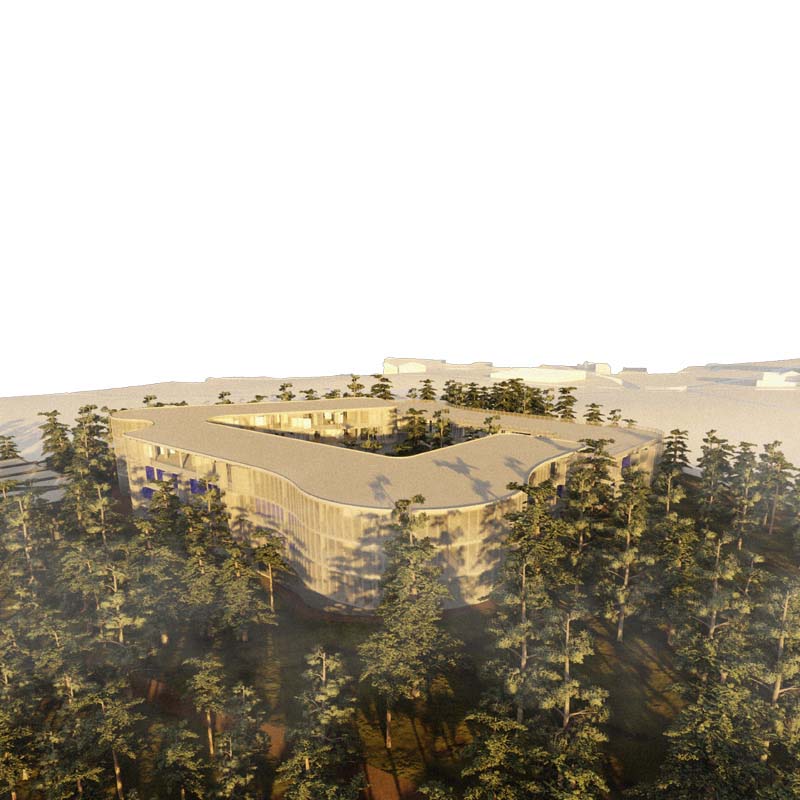

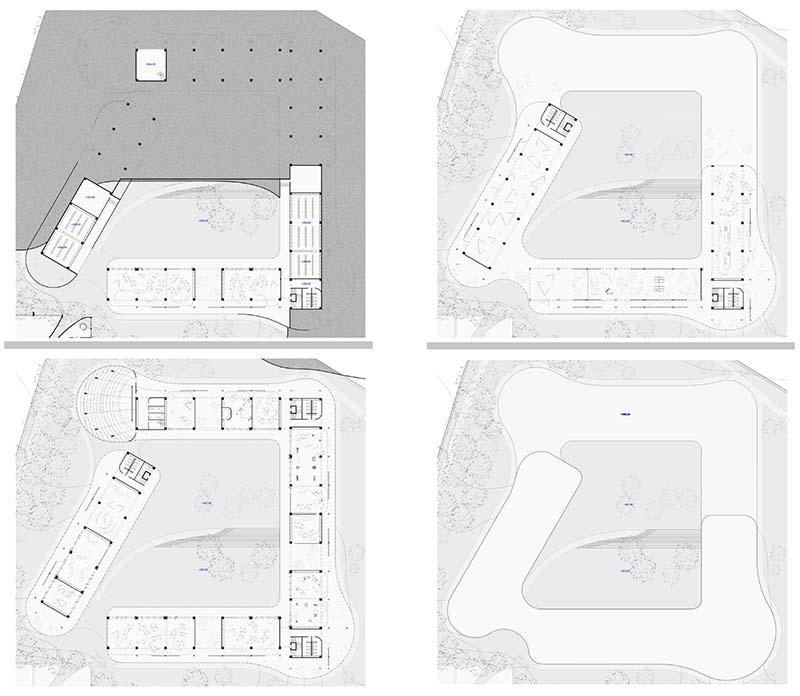

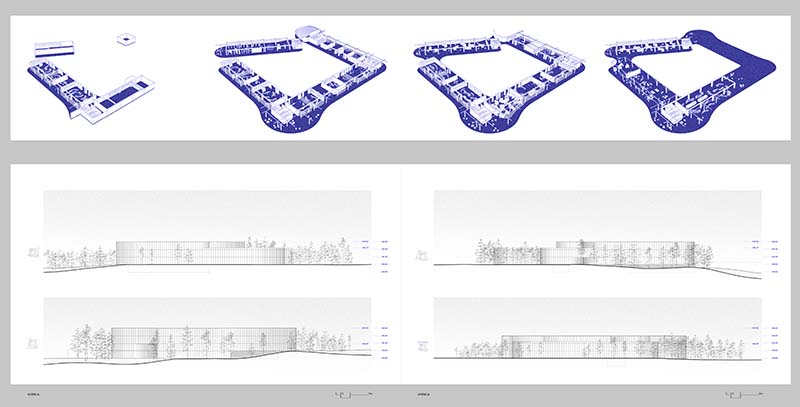

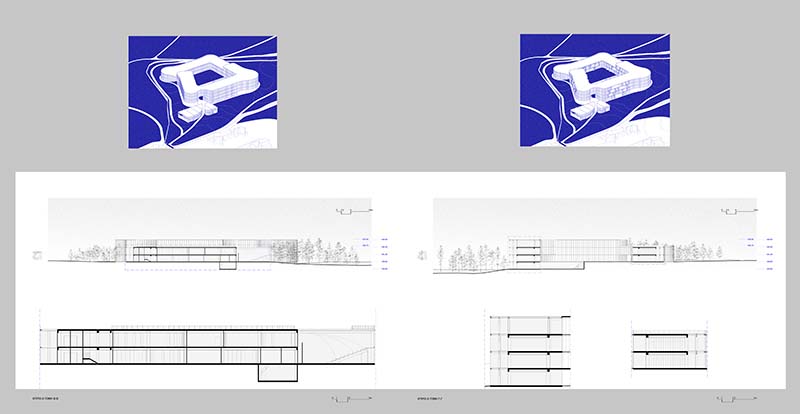

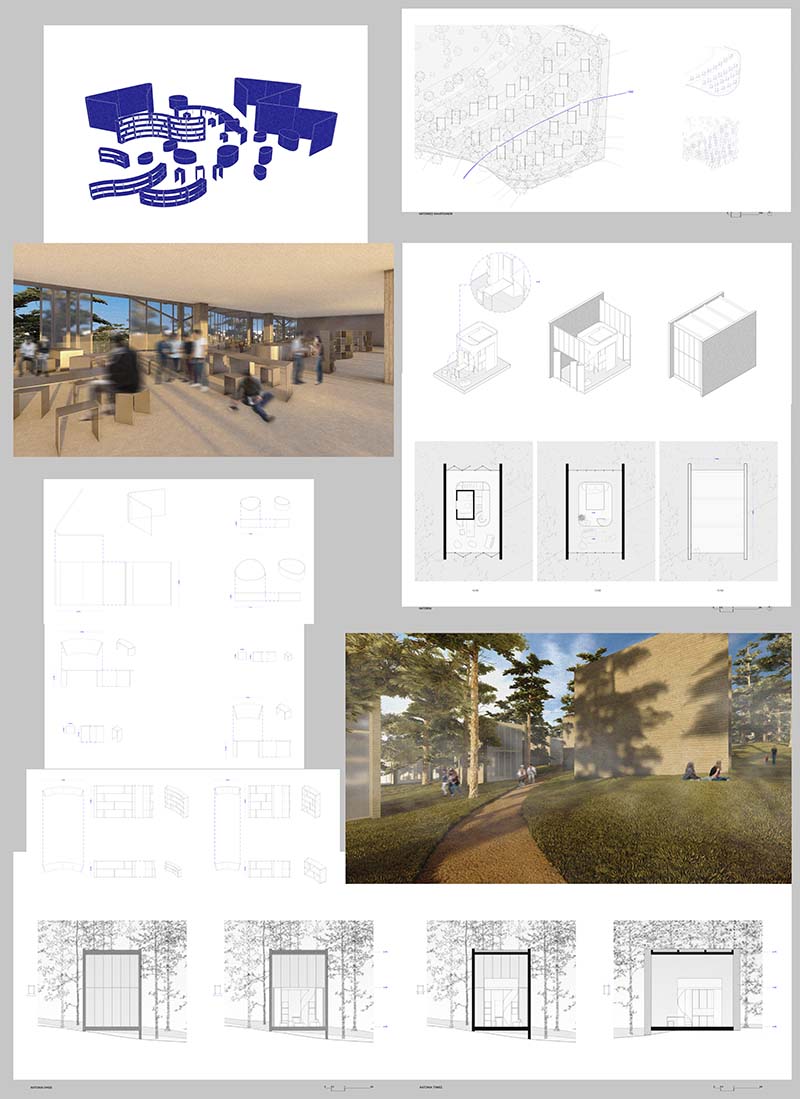

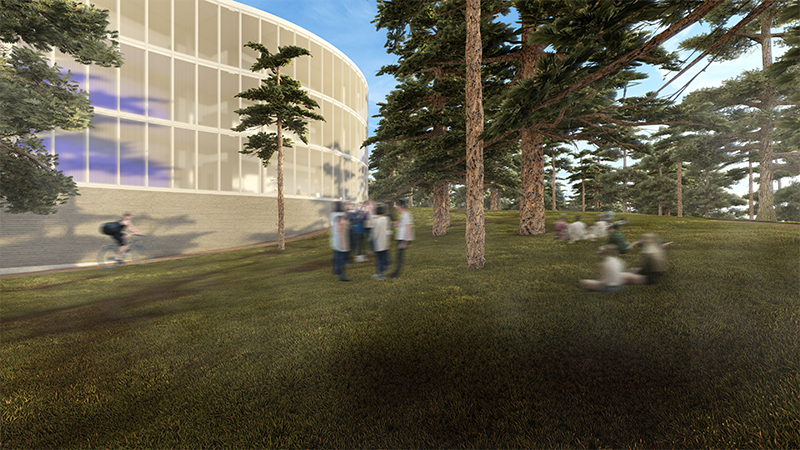

The current thesis focuses on the design of Art Residences in the abandoned complex of buildings of the Varvakeion Foundation in Alsos Kefalari, in Kifissia. The project concerns a set of buildings, some of which are open to the public. The main sector is the one where all the communal workshops of the artists are placed, as well as the collective rest areas. Also, this is where the exhibitions take place as a result of the practices of these workshops. The aim of the design is a center accessible not only to the artists but also to the wider public, in order to follow the exhibitions, visit the cafe-bar and enjoy a green space in the city. Emphasis was placed on the orientation, the exploitation of the natural light and the shade of the pine trees, while the main concern was not to interfere with the natural landscape and its character. It provides spaces and workshops for collective work as well as private spaces for artists. The boundaries of the halls and the corridors of the building are designed to be modified and thus, connection and continuous communication is achieved, both between the interior spaces as well as the inside and the outdoors.
Supervisor: Gavrilou Evelyn
Reference Number: 999
.jpg)
.jpg)


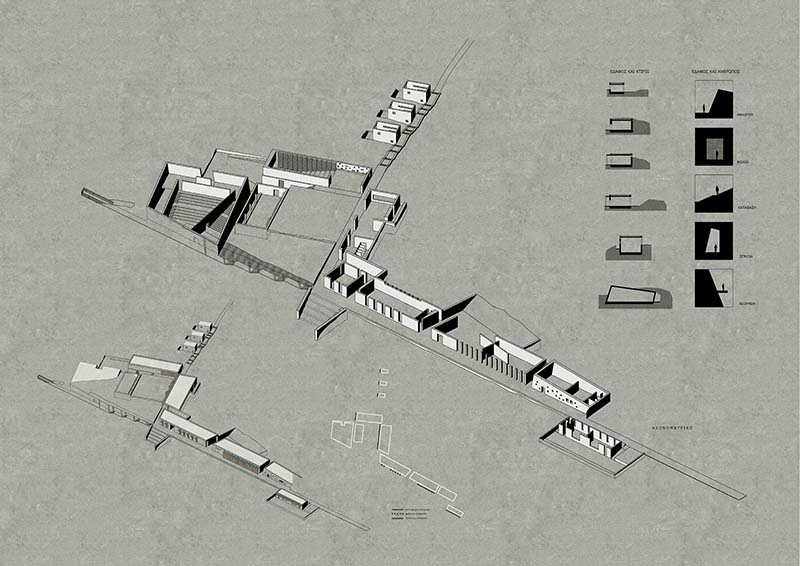

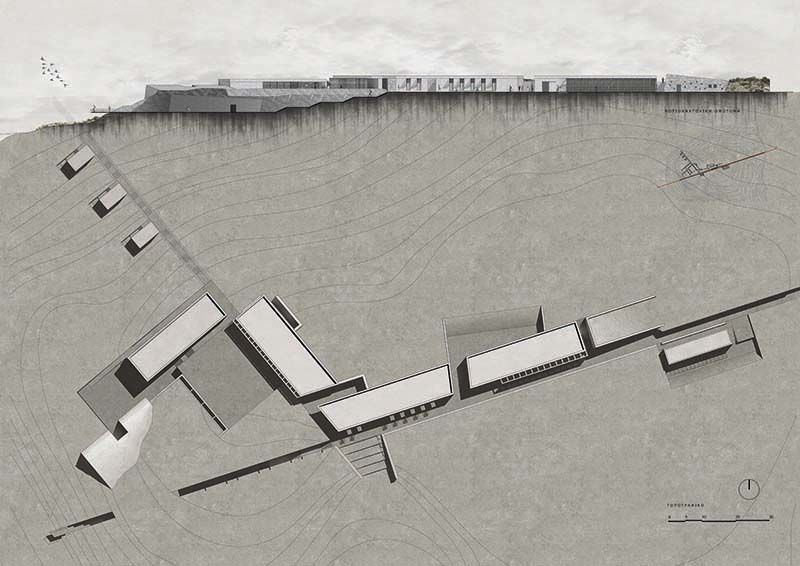

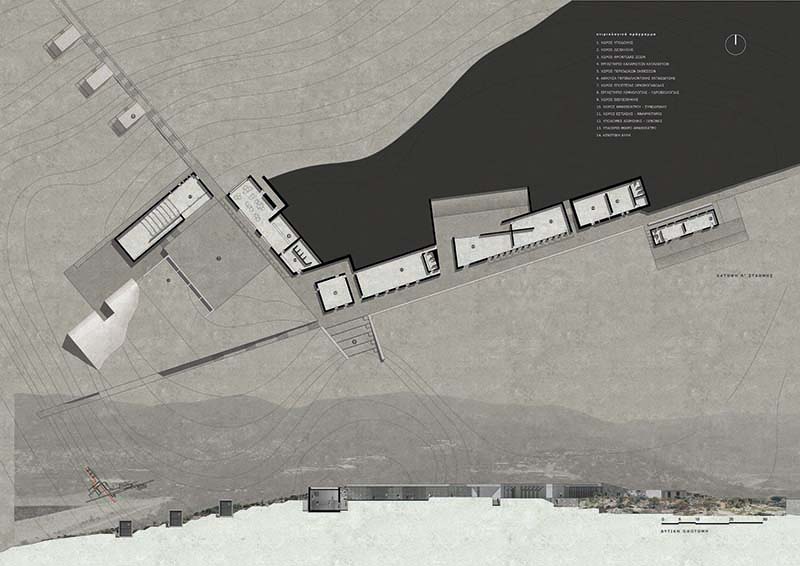

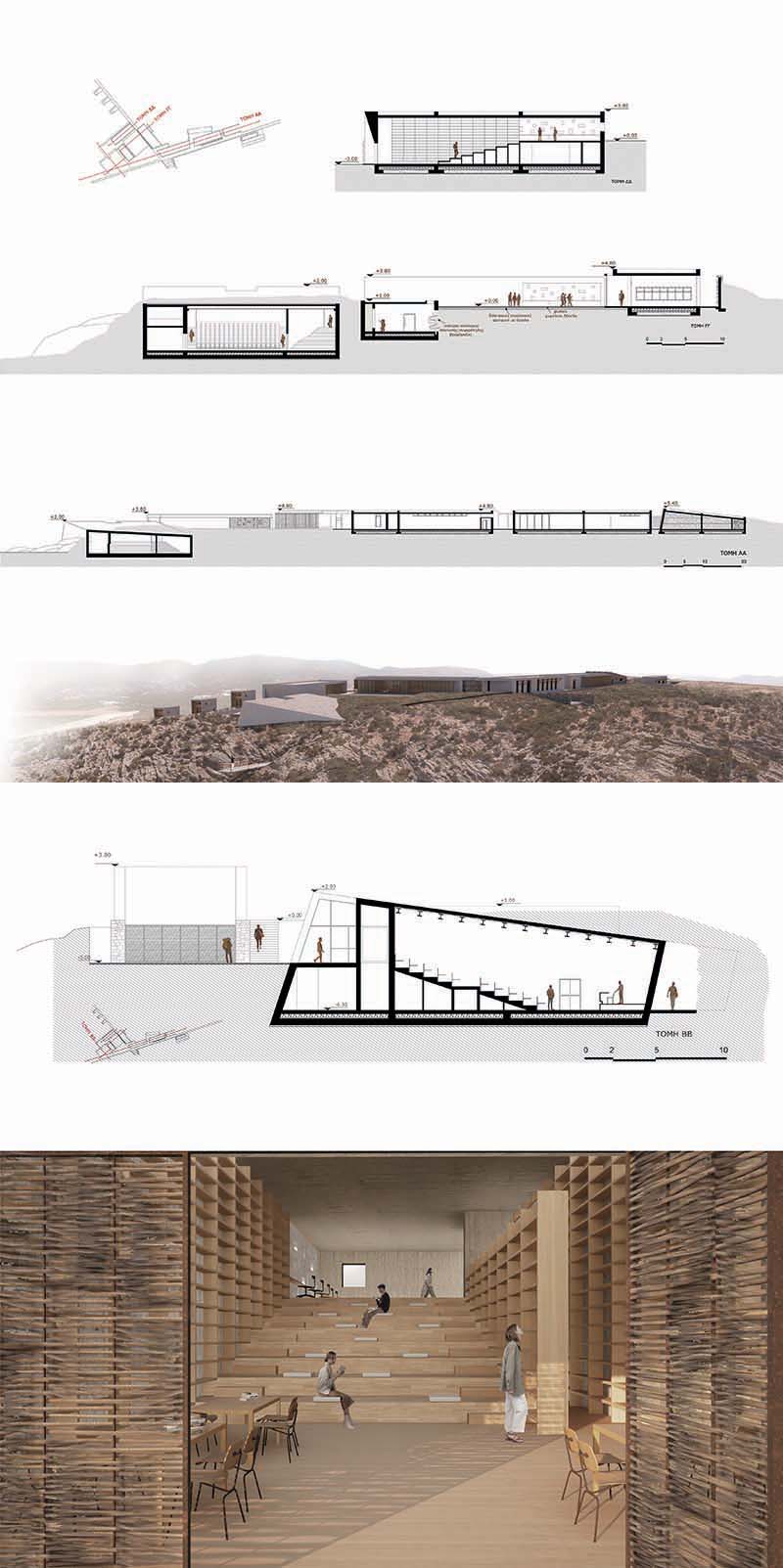

The observation and investigation of landscapes that have been drastically transformed by anthropogenic factors was the trigger for this thesis. The research focuses on Lake Karla or otherwise Lake Voiveida, which is evolving from a changing landscape to a controlled-recovered landscape.
The reconstruction of Lake Karlas is one of Europe's largest environmental projects, highlighting the landscape as a model field for research, scientific training and environmental awareness. The main goal of the smooth coexistence of all involved bodies, residents, scientists, visitors, with the ecosystem of the recreated Lake has not yet been achieved and this project aims to help in such a direction. The intervention area was chosen to be in a lakeside area of the eastern side bordering the outskirts of mountain Maurovouni with a strong geomorphological interest and altitude difference compared to the rest of the coastal areas.
The intention of the work is to open a dialogue between the wetland and the rocky topography of the area, a viewing and touring system by creating a hub of walking routes and stops with the lake as a reference center and having as a core a mixed-use architectural program that will host educational actions, research, cultural and ecotourism. The aim of the building structure is to create a tripartite hub that will concern the local community, scientists and visitors with a common focus on the management of the natural environment and the eco-development of the area. The contribution of the scientists lies in the monitoring and management of the living and non-living elements of the area with the aim of informing and protecting biodiversity.
Accordingly, the inclusion of the community and visitors is encouraged through the engagement and development of cultural practices and activities, such as thatched constructions, basket weaving, periodic exhibitions and workshops. Ultimately, the cooperation of all individuals and the functional program aims at the development of individual responsibility towards the environment and the spirit of volunteerism.
Supervisors: Manolidis Kostas, Kouzoupi Aspassia
Reference Number: 1004

